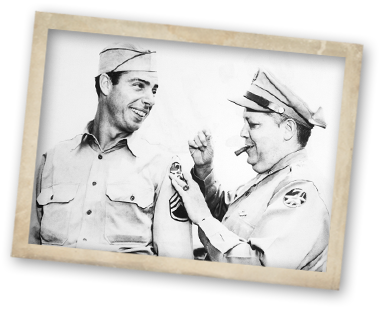 Joe DiMaggio traded a $43,750 Yankees salary for a payment of $50 each month when he chose to enlist in the army on February 17th, 1943. It was reported that Joe requested he receive no special treatment, yet he spent most of his time in the Army playing baseball, as did many other big league stars.
Joe DiMaggio traded a $43,750 Yankees salary for a payment of $50 each month when he chose to enlist in the army on February 17th, 1943. It was reported that Joe requested he receive no special treatment, yet he spent most of his time in the Army playing baseball, as did many other big league stars.
The purpose of Joe and other big leaguers playing on the military teams was to keep the regular troops entertained, as well as keep public morale high. World War I had put an end to the baseball season in 1918, and President Franklin D. Roosevelt believed it was important for the country to keep baseball going in World War II.
In Roosevelt’s now famous “Green Light Letter,” he encouraged baseball and its owners to continue playing during World War II:
I honestly feel that it would be best for the country to keep baseball going. There will be fewer people unemployed and everybody will work longer hours and harder than ever before. And that means they ought to have a chance for recreation and for taking their minds off their work even more than before.
Because of this push from Roosevelt, Joe and others continued to play and bring entertainment to a nation, solidifying the sport as America’s favorite pastime—even during hard times.
Joe was assigned to Special Services and stationed at California’s Santa Ana Air Base. The only major league player on his military team, he and his teammates played against semipro clubs, local college teams and Pacific Coast League teams. Joe reached sergeant rank in August 1943.
In order to ensure the professional players had some time overseas, Joe and other major league players were transferred to Hawaii in Spring 1944. In time, the best military baseball players were stationed in Hawaii.Big names like Johnny Beazley, Joe Gordon, Pee Wee Reese and Red Ruffing, along with Joe, were split into different teams. Joe joined the Seventh Army Air Force team, which played a nearly full major league schedule.
Although Joe had developed stomach ulcers and was often in a lot of pain, he continued to serve in the military and play for the Seventh Army Air Force team until he was given a medical release from the Army on September 14, 1945. He suited up again for the Yankees the following spring.
Resources:
http://www.baseball-reference.com
http://www.baseballinwartime.com